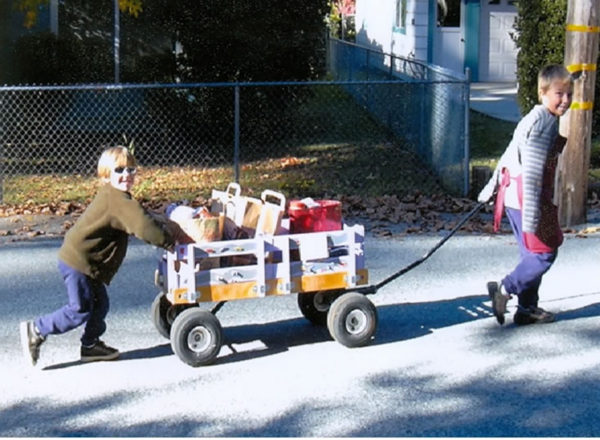Submitted by Sharon Davisson, Nevada City, CA
In thinking about the P.E.A.C.E. 2010 Seminar “Action for Citizenship,” I pondered just what the world “citizenship” has to do with young children. I soon realized that citizenship is not just a term we bestow on adults when they participate in our representative form of government, but rather a term we use when describing an individual’s participation in whatever community they inhabit. Age doesn’t matter. If we provide learning environments that enable children – even very young children – to participate in decision making, express their views, and take responsibility for their actions – then we are facilitating their capacity to become competent citizens of their own community.
In a peaceable classroom community, we have abundant opportunities to nurture children’s disposition for citizenship. There is a lovely story at the end of this essay describing an empowered 4-year old practicing what anyone would consider as good citizenship skills. Following are several components of a peaceable classroom that contribute to children developing the capacities and capabilities of “citizenship.”
Peaceful Conflict Resolution
The peaceful conflict resolution process develops a sense of competency and teaches life skills of self-control, assertiveness, listening and processing, creativity, perspective taking, empathy, respectful communication and how to work cooperatively and fairly in groups – all skills of constructive citizenship.
Decision Making
Children can experience the building of a democratic community by practicing decision making together. Class meetings are an excellent way to offer children the opportunity for developing decision making skills. During class meetings children can share ideas and experiences, collaborate on group projects, discuss social problems and work together to find solutions.
Class Agreements
I believe, Class Agreements are one of the most empowering strategies we can use in our peaceable classroom. The children are invited to genuinely participate in co-creating guidelines for how to safely and respectfully work and play together. The standard for the agreements can be as simple as “A Safe School.” By encouraging children to offer suggestions and carefully listen and evaluate each other’s contributions, we are nurturing their ability to govern their own behaviors.
Problem Solving
The possiblities for problem solving are endless – from concrete problems such as how to create the color green or how to build a bridge with blocks, to more abstract problems such as how two children can share one swing, or how to collaborate on a class project. Each problem solved by a child contributes to that child’s sense of competency, willingness to take risks, and willingness to take action.
Social Responsibility
A critical feature of citizenship is the taking of responsibility for what occurs in our social environment. As adults, we can help children celebrate their differences, learn about acceptance and respect, take responsibility for their actions and critically analyze fairness and justice and act on injustices.
The Food Wagon
The following is an example of a child well practiced in problem solving and taking action in the classroom. Fortunately, he was empowered with the confidence to take action when recognizing an injustice in the wider community. At 4 ½ years of age, he overheard his parents discussing the fact that the homeless in our community had little or no access to food. This confident and pro-active child immediately asked his parents if he could go get some food from the neighbors! With their permission, he headed out. He and his younger brother continued for many years to collect food for the homeless in what they call their “food wagon.” What a fine example of a disposition for citizenship!


